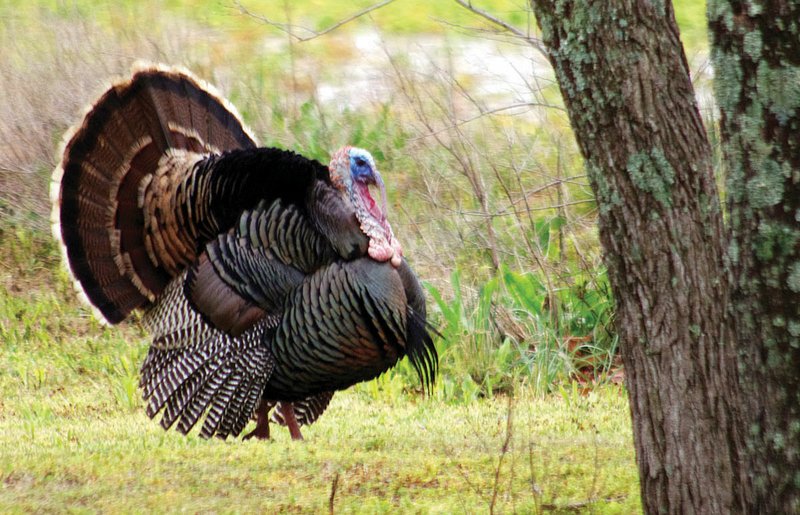The male turkey -- snood engorged, tail feathers spread extravagantly -- struts briskly in the video after the U.S. Postal Service vehicle, circling the boxy white truck and lunging as the mail carrier inserts envelopes in each box along the block.
The viral video, with 7 million views and counting, is just one of the many examples of increasingly spirited human-turkey kerfuffles.
In Toms River, N.J., they have terrorized an over-55 community, attacking cars and pecking kiddie pools until they deflate. While flocks (a group of wild turkeys is called a rafter) have crashed through windshields in Florida, pecked their way into police stations in Massachusetts and in Utah become such a nuisance that 500 were rounded up and relocated to the deep woods.
Wild turkeys were almost eradicated from the United States in the early 1900s, their dwindling numbers driven by unrestricted harvesting for meat and feathers. Wild turkey numbers were less than 500,000 in the 1950s.
There are now more than 6.2 million. They weigh between 11 and 24 pounds and run as swiftly as 25 mph and fly as fast as 55 mph. They are omnivores, eating primarily plants unless, during periods of skeletal and feather growth, they require more insect protein. They have talons and spurs but seem daunted by hoses and open umbrellas. (The Humane Society gives this advice on what to do in encounters.)
So why so many angry birds?
Marcus Lashley, assistant professor in the Department of Wildlife Ecology and Conservation at the University of Florida, points to two pieces of historic legislation that established the framework for turkey population rebound: The Lacey Act of 1900 that banned trafficking in illegal wildlife, and the Pittman-Robertson Act in 1937 which added an excise tax for guns and ammunition that provides federal aid to states for management and restoration of wildlife. More than $7 billion has been collected from manufacturers since enactment and made available to states.
Lashley listed bag limits, the funding for conservation and restocking efforts as the three factors most responsible for the turkey's resurgence.
Wildlife biologist Mark Hatfield, who works for the National Wild Turkey Federation, points to other factors that may have given rise to human-turkey encounters.
"Urban and suburban settings are creating safe havens where hunting is not allowed," he said. "We're making good habitat in the suburbs, with nice open green spaces and lack of predators."
The males like golf courses, for instance, because they provide a glamorous backdrop to display and show off to the hens.
Hatfield said urbanization and a shifting zeitgeist have led to a decline in hunting. Less than 4% of the American population has a hunting license. And, as Lashley added, most of the turkey's natural predators, such as red wolves, cougars and pumas, have diminished populations, although raccoon, possums, skunks and feral hogs will pilfer turkey nests and pick off the poults.
Sports on 01/07/2020

